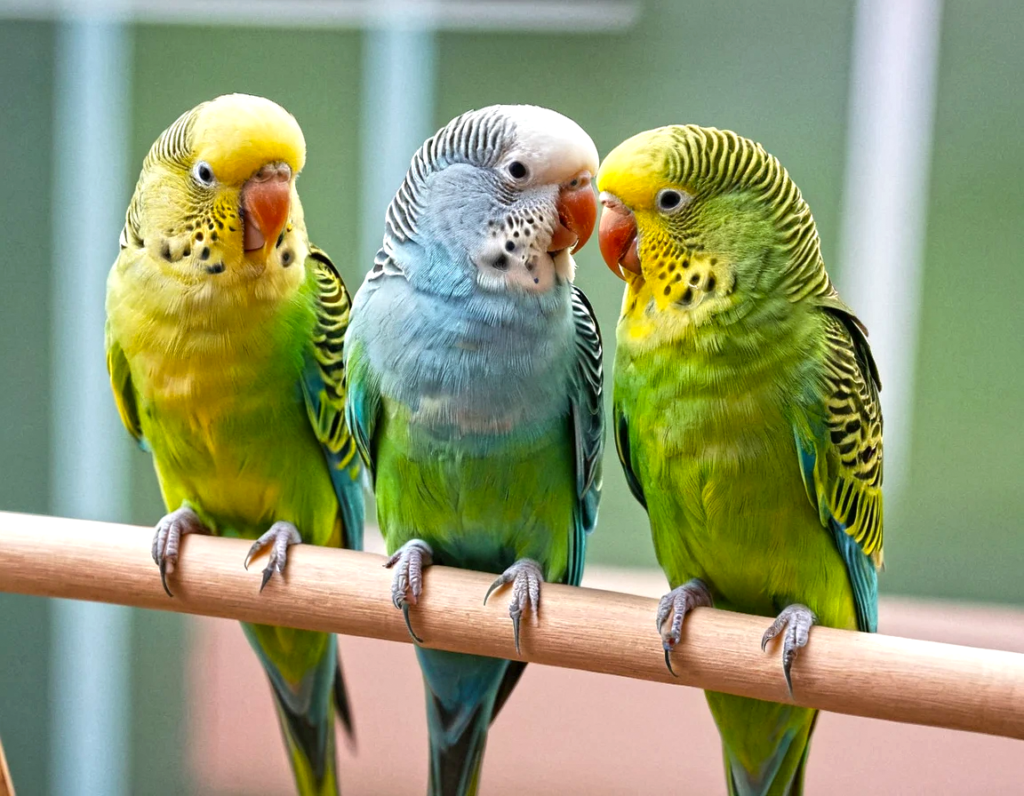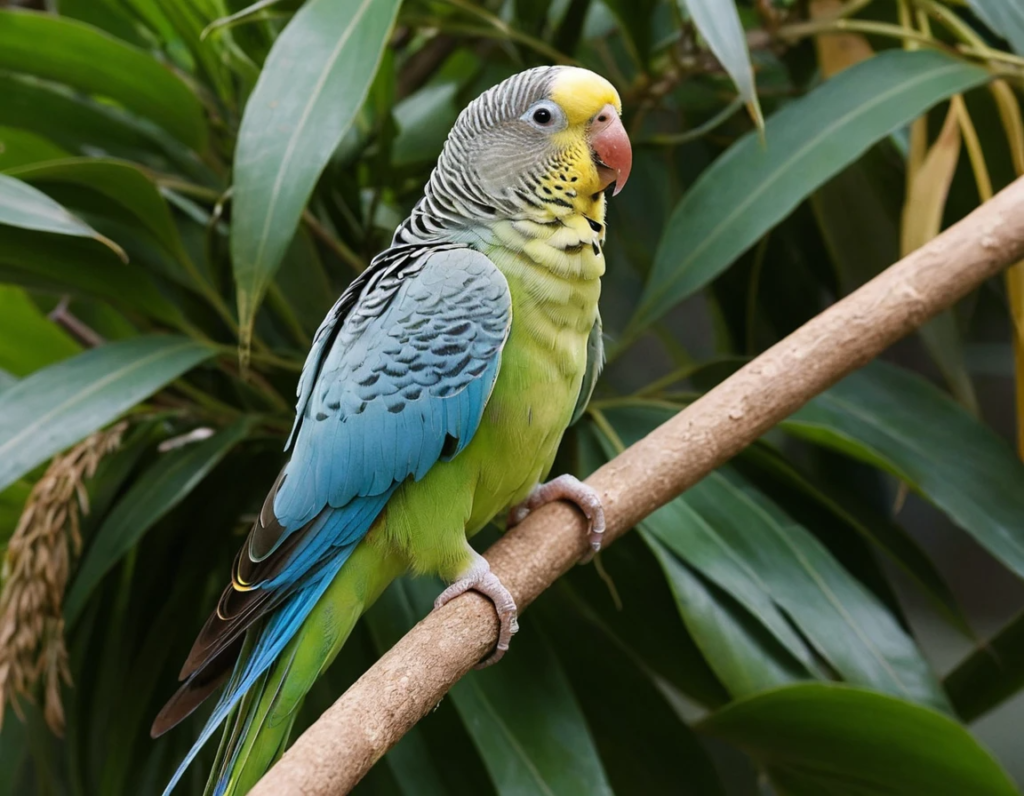
How to Teach a Parakeet to Talk: A Fun and Simple Guide
Teaching a parakeet to talk can be a delightful experience. Imagine coming home to your feathery friend chirping, “Hello, beautiful!” — instant mood boost, right? While it does take time and patience, with the right approach, your parakeet talking dreams can come true. Let’s break it down into easy steps.
Step 1: Build a Bond First
Before your parakeet will spill the beans (or words), you need to establish trust. Spend time near the cage, talk softly, and offer treats. Think of it like dating — your bird isn’t going to talk if they don’t feel comfortable with you.
Pro Tip: Sit near the cage and read aloud. Your parakeet won’t care if it’s Shakespeare or the cereal box ingredients.
Step 2: Choose Simple Words First
Start with easy, single words like “Hello,” “Pretty,” or your parakeet’s name. Avoid complex tongue twisters. We’re teaching a parakeet, not prepping them for a spelling bee.
Repeat these words often and use a cheerful tone. Birds love enthusiasm!
Step 3: Practice Regularly (But Keep It Short)
Consistency is key. Practice talking sessions for about 5-10 minutes a few times a day. Any longer, and your parakeet might just start looking at you like, “Seriously, bro? Give me a break.”
Step 4: Reward Progress
Whenever your parakeet mimics a sound (even if it’s not perfect), reward them with a treat. Positive reinforcement works wonders.
Warning: Be careful what you say around your bird. They have a knack for picking up words you didn’t intend, like that one time you stubbed your toe.
Step 5: Use Repetition (and Some Tunes)
Repetition is your best friend when teaching a parakeet talking skills. You can even play recordings of yourself saying the target words. Parakeets are like little DJs—they love a catchy tune and will remix your phrases in their own unique way.
Step 6: Be Patient
Some parakeets pick up talking quickly, while others take their sweet time. Don’t get discouraged if your bird prefers to chirp rather than chat. They’re still adorable either way.
Common Questions About Parakeet Talking
Q: Can all parakeets learn to talk?
A: Not all parakeets will become chatterboxes, but most can learn a few words with patience and practice.
Q: Do male or female parakeets talk better?
A: Male parakeets are usually more talkative, but females can surprise you too.
Q: What if my parakeet only whistles?
A: Whistling is still a win! They’re expressing themselves. Keep at it, and words might follow.
Final Thoughts
Teaching a parakeet to talk is like having a quirky roommate who eventually joins your conversations. Remember, patience and positivity are key. And when that first “Hello” finally chirps back at you, it’ll all be worth it.
So grab some treats, warm up those vocal cords, and get ready for some delightful parakeet talking sessions. Your little feathered friend might just become the most charming conversationalist in the house.
Best Words to Teach a Parakeet: Simple and Fun Suggestions
If you’re dreaming of having your parakeet talking up a storm, you’re in for a fun journey. Choosing the right words can make the learning process easier and more enjoyable for both you and your feathery friend. Let’s dive into some of the best words to get your parakeet talking and chirping like a pro.
Start with Greetings
Parakeets are social creatures, so greetings are a great starting point. Common phrases like:
- “Hello!”
- “Good morning!”
- “Hey there!”
Say these words with enthusiasm. Trust me, no one wants a parakeet that sounds like they’ve had a rough day at the office.
Teach Their Name
Parakeets love hearing their name, especially when it’s followed by praise or a treat. Repeat their name frequently in a happy tone. Imagine how cool it’ll be when your bird starts introducing themselves at parties (okay, maybe just in your living room).
Compliments Go a Long Way
Everyone likes a compliment, even parakeets. Try phrases like:
- “Pretty bird!”
- “You’re so cute!”
- “Good bird!”
Just don’t get offended if they start fishing for compliments every time you walk by.
Simple Everyday Words
Incorporate words you use regularly, such as:
- “Food”
- “Water”
- “Treat”
Your parakeet might just become your personal grocery list reminder.
Fun and Silly Words
Have a little fun with quirky words. Parakeets can pick up on playful phrases, like:
- “Peekaboo!”
- “Woohoo!”
- “Yippee!”
Imagine your parakeet cheering you on as you find your car keys.
Sound Effects
Parakeets love mimicking sounds, so try teaching them playful sound effects like:
- Whistles
- Kisses (“Mwah!”)
- Laughs
It’s hilarious when your parakeet talking sessions turn into impromptu comedy shows.
Short Phrases
Once they’ve mastered single words, move on to short phrases:
- “What’s up?”
- “I love you!”
- “Let’s play!”
Tips for Success
- Be Patient: Not all parakeets learn at the same pace.
- Repeat Often: Repetition helps words stick.
- Use Positive Reinforcement: Treats and praise go a long way.
Final Thoughts
Teaching your parakeet talking skills is all about having fun and building a bond. Choose words that make you smile, because hearing your bird chirp back a joyful “Hello, cutie!” will brighten anyone’s day.
So grab some treats, warm up your vocal cords, and get ready for some delightful conversations with your parakeet—who might just become the sassiest little chatterbox in your home.
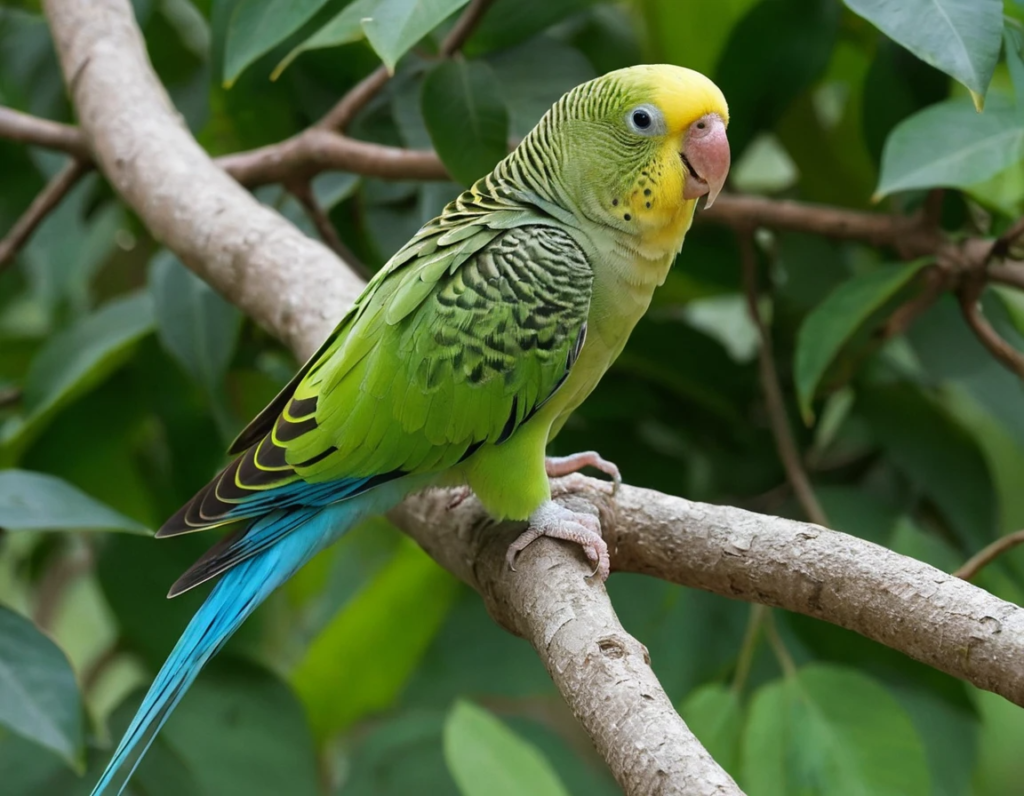
How Long Does It Take for a Parakeet to Talk?
So, you’ve brought home a charming little parakeet, and now you’re dreaming of delightful conversations with your feathered friend. But the big question looms: how long does it take for a parakeet to talk? Well, let’s break it down and add a dash of humor while we’re at it.
Patience Is Key (No, Really)
Parakeet talking doesn’t happen overnight. Some parakeets may start mimicking sounds within a few weeks, while others take months (or even never). It’s like waiting for a toddler to say their first word—you never know when it’ll happen, but when it does, it’s magical.
Factors That Affect Talking Time
Several things influence how quickly your parakeet picks up words:
- Age: Young parakeets (3-6 months old) are more likely to learn faster.
- Gender: Male parakeets tend to be more chatty than females.
- Environment: A quiet, stress-free space makes learning easier.
- Training Consistency: Regular practice sessions are crucial.
How to Speed Up the Process
Here are some tips to encourage your parakeet talking sooner:
- Talk Often: Speak to your parakeet daily. Narrate your day like they’re your tiny therapist.
- Repeat Simple Words: Stick to easy words like “Hello,” “Pretty bird,” or their name.
- Use a Happy Tone: Enthusiasm is contagious—even to birds!
- Reward Progress: When they mimic a sound (even a garbled one), reward them with a treat.
Warning: Be mindful of your language. Parakeets are notorious for picking up words you didn’t intend to teach. Yes, that includes your reaction to stubbing your toe.
When Will My Parakeet Finally Talk?
On average, parakeets start talking between 3 and 12 months after training begins. However, every bird is different. Some may surprise you with their first words early on, while others may just prefer chirping their own tunes.
Pro Tip: Celebrate the small wins. Even if your parakeet only whistles or mimics household sounds, that’s still a sign they’re engaging with you.
What If My Parakeet Never Talks?
Not all parakeets will become chatty. And that’s okay—some birds are just better at being excellent listeners (which is more than we can say for some humans!). Enjoy their company and cherish the bond you’ve built.
Final Thoughts
Teaching a parakeet talking skills is a journey filled with fun, patience, and the occasional hilarious mishap. Remember, every bird is unique, and the goal is to have a joyful bond—whether or not they ever say, “Hello!”
So keep talking, stay positive, and who knows? Your parakeet might just surprise you with the most charming conversation when you least expect it.
Why Isn’t My Parakeet Talking?
You’ve been patiently chatting with your parakeet, hoping they’ll finally blurt out a cheerful “Hello!” But so far? Nothing but chirps and whistles. Don’t worry—you’re not alone. Let’s dive into some common reasons why your parakeet isn’t talking and what you can do to get that parakeet talking in no time.
1. They Need More Time to Settle In
If your parakeet is new to your home, they might still be adjusting to their environment. Think of it like starting a new job—you’re not cracking jokes on day one.
Solution: Give your parakeet time to feel safe and comfortable. Spend time near the cage, talk softly, and build trust.
2. Your Parakeet Is Too Young (or Too Old)
Age matters when it comes to talking. Young parakeets (around 3-6 months old) are the best learners.
Solution: If your parakeet is still a baby, be patient. If they’re older, focus on bonding rather than high speech expectations.
3. You’re Not Repeating Words Enough
Parakeets learn through repetition. If you’re only saying “Hello” once a week, your bird isn’t getting the memo.
Solution: Repeat simple words consistently. Try saying “Hello” every time you walk past their cage.
Pro Tip: Use a happy, upbeat tone. No one wants to mimic a grumpy voice.
4. Gender Might Play a Role
Male parakeets are generally better talkers than females. That’s not to say females can’t learn—they’re just less likely to become chatterboxes.
Solution: If you have a female parakeet, focus on bonding and celebrating other forms of communication, like whistles.
5. They Prefer Chirping Over Talking
Some parakeets are natural-born whistlers rather than wordsmiths.
Solution: Embrace your bird’s unique personality. Whistling is still a form of communication.
6. Stress or Fear
A stressed parakeet won’t be in the mood to learn new tricks.
Solution: Ensure they have a calm environment with plenty of enrichment. Avoid sudden movements and loud noises.
7. Lack of Positive Reinforcement
Birds love rewards—and not just the verbal kind.
Solution: Offer treats when your parakeet mimics a sound, even if it’s just a chirp that sounds vaguely like a word.
8. You Might Be Talking Too Fast
Parakeets need clear, slow speech to understand what you’re saying.
Solution: Slow down your words and enunciate. Imagine you’re talking to someone over a bad phone connection.
Final Thoughts
If your parakeet talking journey is off to a slow start, don’t fret. Some birds take their time, while others may prefer chirps and whistles over full-blown conversations. The key is patience, consistency, and a whole lot of love.
So keep talking, stay upbeat, and remember—even if your parakeet never says “Hello,” they’ll still be your delightful, feathered companion.
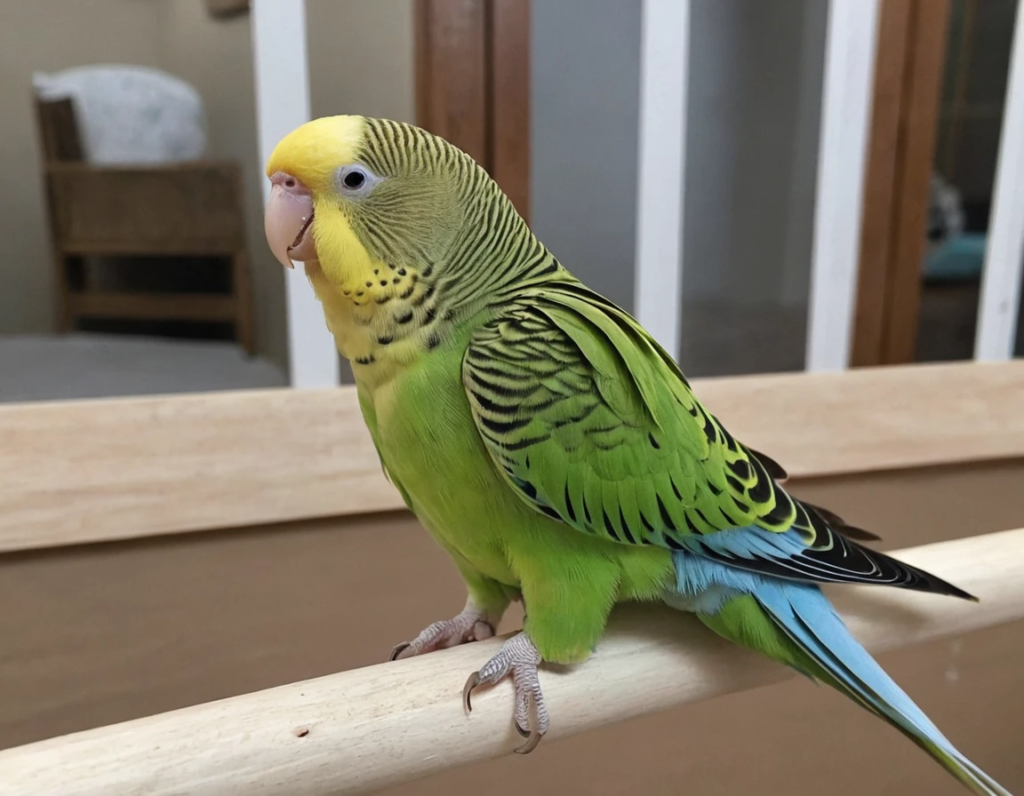
Do Male or Female Parakeets Talk Better?
If you’re hoping to have some heart-to-heart conversations with your parakeet, you might be wondering: do male or female parakeets talk better? Well, buckle up because we’re diving into the fascinating (and slightly chatty) world of parakeet talking.
The Chatterbox Crown Goes to... Male Parakeets!
Male parakeets generally have a reputation for being the better talkers. They tend to be more vocal and love mimicking human speech. Think of them as the life of the party, always ready to learn a new word or show off their whistling skills.
Why Are Males More Talkative?
It all comes down to nature. In the wild, male parakeets use their vocal skills to attract mates. So, it’s no surprise that they bring those same chatty vibes into your living room.
Pro Tip: If you’re dreaming of a parakeet talking non-stop, a male might be your best bet.
But Don’t Count Out Female Parakeets
Female parakeets may not be as talkative as their male counterparts, but they can still learn words and phrases. They’re just a bit more selective about it—think strong, silent type.
Fun Fact: Female parakeets often have stronger personalities. If they decide to talk, they’ll likely make sure you’re paying attention.
Tips for Teaching Both Genders
Whether you have a male or female parakeet, here are some tips to get them talking:
- Start with Simple Words: Words like “Hello” and “Pretty bird” are great starters.
- Be Consistent: Repeat words regularly. Parakeet talking is all about repetition.
- Use a Happy Tone: Enthusiasm is contagious—even for birds.
- Reward Progress: Celebrate every sound with treats and praise.
What If My Parakeet Prefers Chirping?
Not all parakeets will become chatterboxes, and that’s okay. Some birds prefer expressing themselves through chirps and whistles. It’s like having a friend who loves humming but never sings the lyrics.
Final Thoughts
So, do male or female parakeets talk better? Males usually take the crown, but females can surprise you. The key is patience, bonding, and plenty of positive reinforcement.
Remember, whether your parakeet talking dreams come true or they stick to chirping, they’re still delightful companions. So keep talking, keep smiling, and enjoy the unique personality of your feathered friend.
Top Talking Parakeet Breeds
If you’re dreaming of a parakeet that can do more than just chirp sweetly, you’re in for a treat. Some parakeet breeds are known for their impressive talking skills, and with the right training (plus a little patience), they can become charming little chatterboxes. So, let’s dive into the best breeds for parakeet talking and see what makes them stand out.
1. Budgerigar (Budgie)
These tiny dynamos are the undisputed champions of parakeet talking. Budgies are known for their ability to learn a vast vocabulary—sometimes hundreds of words!
Why They’re Great: Budgies are social, curious, and enthusiastic learners.
Fun Fact: One famous Budgie named Puck holds the Guinness World Record for knowing over 1,700 words. That’s more than some toddlers!
2. Monk Parakeet (Quaker Parrot)
These lively birds have a big personality and a talent for speech. They’re excellent at mimicking human voices and other sounds.
Why They’re Great: Quaker Parrots are bold and love to engage in conversations.
Fun Fact: They’re also architects of the bird world, building intricate communal nests.
3. Indian Ringneck Parakeet
Sleek and elegant, the Indian Ringneck Parakeet is a talker with a distinct, clear voice. They’re highly intelligent and can develop an impressive vocabulary.
Why They’re Great: They love mental stimulation and thrive on interactive training.
Fun Fact: These birds have been kept as pets for centuries, even appearing in ancient Indian artwork.
4. Alexandrine Parakeet
Named after Alexander the Great, these large and gentle birds are wonderful companions with a knack for talking.
Why They’re Great: Alexandrines are friendly and bond closely with their owners.
Fun Fact: Their deep, melodic voice makes them excellent mimics.
5. Plum-headed Parakeet
These colorful beauties are quieter than some of their counterparts but can still learn to talk with the right encouragement.
Why They’re Great: They have a sweet nature and enjoy bonding with their humans.
Fun Fact: Their stunning plum-colored heads make them a visual delight.
Tips for Encouraging Parakeet Talking
- Start Early: Young birds are more receptive to learning.
- Be Consistent: Repetition is key—say the same words regularly.
- Use Positive Reinforcement: Reward them with treats and praise.
- Keep It Fun: Parakeets respond best when training is enjoyable.
Final Thoughts
Whether you choose a Budgie, Quaker Parrot, or an Indian Ringneck, remember that every bird has its own personality. The joy of parakeet talking isn’t just about the words they learn—it’s about the bond you build along the way.
So keep chatting, stay patient, and who knows? Your feathered friend might just surprise you with a witty comment when you least expect it!
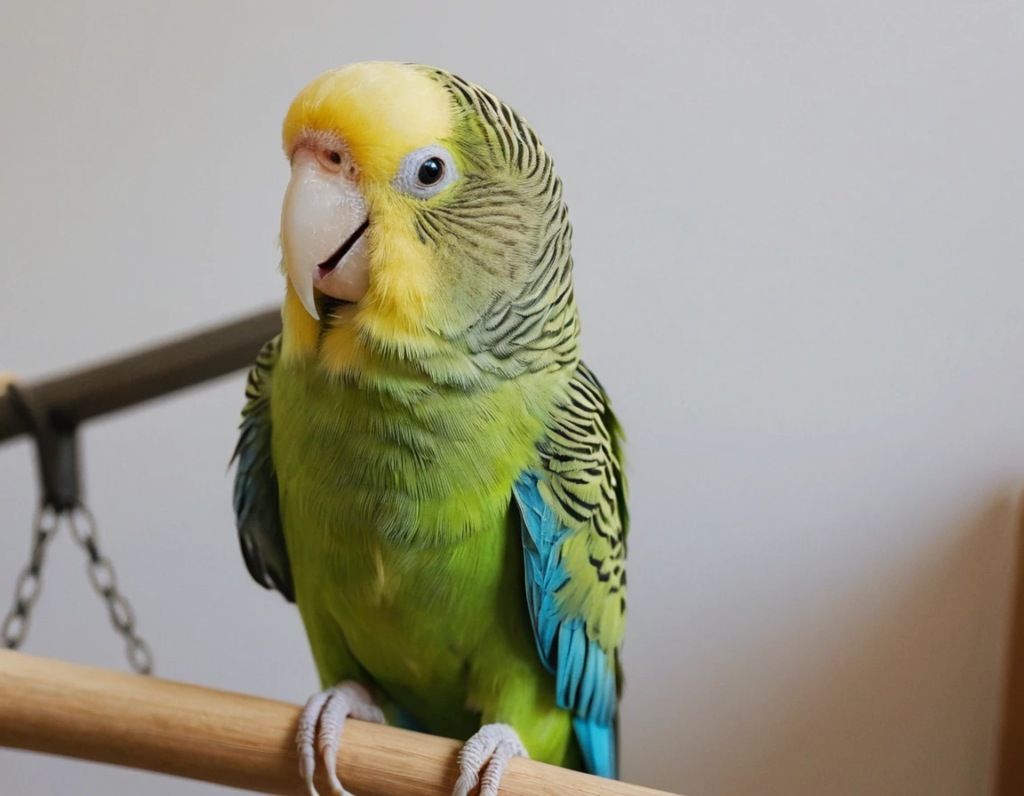
Talking Parakeet Videos: Chirps, Chuckles, and Clever Conversations
If you’re looking for a mood booster, nothing beats watching talking parakeet videos. These charming little birds know how to steal the spotlight with their adorable antics and impressive vocabulary. From cheerful greetings to unexpected wisecracks, talking parakeets are the true comedians of the bird world. Let’s explore what makes these videos so captivating and why parakeet talking is such a joy to witness.
Why We Love Talking Parakeet Videos
There’s something downright magical about hearing a parakeet mimic human speech. Maybe it’s the surprise factor—after all, they’re tiny birds with big communication skills. Or maybe it’s just hilarious to hear a bird say “Who’s a pretty bird?” with all the confidence of a TV show host.
Fun Fact: Some talking parakeets can even mimic household sounds like doorbells and phone rings. Talk about keeping you on your toes!
What Makes a Great Talking Parakeet Video?
- Clear Speech: The best videos capture parakeets enunciating words clearly. It’s like having a feathery linguist in your living room.
- Funny Phrases: Whether it’s a parakeet saying “I love you” or delivering a perfectly timed “Uh-oh!” funny phrases always make these videos gold.
- Adorable Antics: Talking is just part of the fun—watching a parakeet bop its head or fluff its feathers while chatting adds to the charm.
What Makes a Great Talking Parakeet Video?
- YouTube: A treasure trove of delightful bird videos.
- Social Media Platforms: Instagram and TikTok are filled with parakeet stars who know how to keep their audiences entertained.
- Bird Enthusiast Websites: Communities dedicated to bird lovers often share amazing clips.
Tips for Capturing Your Own Talking Parakeet Video
Want your feathered friend to become the next viral sensation? Here are some tips:
- Be Patient: Parakeet talking takes time and consistency.
- Use Treats: Positive reinforcement works wonders.
- Keep the Camera Ready: Birds have a knack for talking when you least expect it.
- Good Lighting and Sound: Make sure your video setup lets your star shine.
Why Parakeet Talking Videos Are More Than Just Entertainment
These videos are not only fun but also educational. They showcase the intelligence and charm of parakeets, encouraging more people to appreciate and care for these delightful birds.
Final Chirp
Talking parakeet videos are a reminder that sometimes the smallest creatures can bring the biggest smiles. So whether you’re watching a parakeet belt out a song or deliver a perfectly cheeky phrase, enjoy every chirp and chatter.
And who knows? Maybe your own parakeet will be the next viral sensation—better start practicing those lines now!
How to Build a Bond with a Parakeet Before Teaching It to Talk
Teaching a parakeet to talk is exciting, but just like with any friendship, you need to build trust first. Imagine trying to chat with someone who doesn’t even want to sit near you—awkward, right? The same goes for parakeets. Let’s dive into how you can create a strong bond with your feathered friend before diving into the world of parakeet talking.
1. Start Slow—Patience Is Key
Rome wasn’t built in a day, and neither is a parakeet’s trust. Give your bird time to get used to its new environment.
Tip: Sit near the cage and talk softly. Even if your parakeet isn’t replying yet, it’s learning your voice.
Funny Note: Don’t be surprised if your bird gives you the side-eye during these early days—that’s just parakeet curiosity.
2. Offer Tasty Bribes (Treats, of Course!)
Food is the universal language of love, even for birds. Find out what treats your parakeet enjoys, like millet sprays or tiny bits of fruit.
Tip: Hold the treat near the cage and let your bird come to you.
Warning: Don’t spoil your parakeet too much, or it might start thinking you’re just a snack dispenser.
3. Hand Training—One Step at a Time
Once your parakeet is comfortable with your presence, it’s time for some hand training.
Steps:
- Slowly place your hand inside the cage.
- Keep it still and let your parakeet approach.
- Gradually encourage it to step onto your finger.
Pro Tip: Don’t rush this part. A nervous parakeet might fly off faster than you can say “Parakeet talking.”
4. Talk, Sing, and Be Silly
Your parakeet needs to get familiar with your voice, so don’t hold back.
Fun Idea: Sing your favorite songs or read a book out loud. Your parakeet might not critique your pitch, but it will learn to recognize your sounds.
Funny Note: If your bird starts mimicking your off-key singing, well, that’s on you.
5. Respect Personal Space
Even social birds need some alone time. Respect your parakeet’s boundaries and avoid overwhelming it.
Tip: Watch for body language. Fluffed feathers and relaxed chirps mean a happy bird; frantic flapping means “Give me space, please!”
6. Build Daily Rituals
Consistency builds trust. Spend time with your parakeet daily, whether it’s chatting, offering treats, or just sitting nearby.
Fun Fact: Parakeets thrive on routine and will look forward to your bonding sessions.
Why Bonding Matters Before Parakeet Talking
A bonded parakeet is more likely to learn and mimic your words. When your bird feels safe and connected to you, it’ll be more open to learning.
Final Chirp
Building a bond with your parakeet is the foundation for successful parakeet talking. Remember, patience and kindness go a long way. Enjoy the journey—before you know it, your parakeet might just surprise you with a heartfelt “Hello!” or a perfectly timed joke.
So grab those treats, warm up your vocal cords, and get ready to make a lifelong feathered friend!
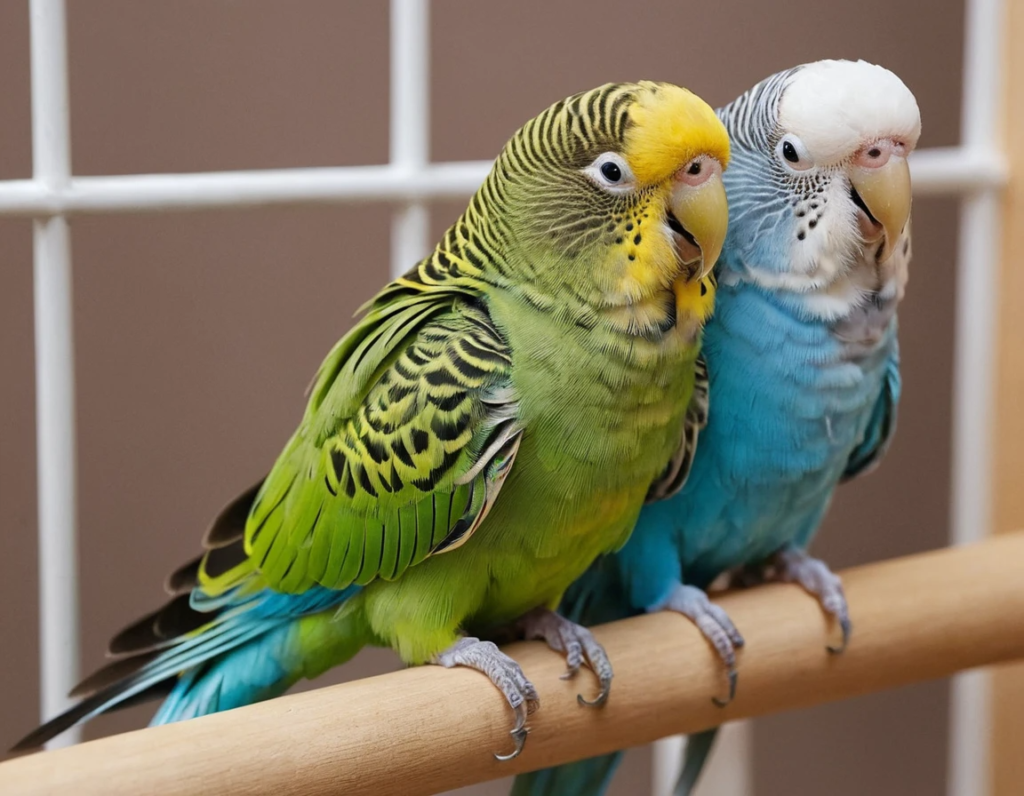
Can Parakeets Understand What They’re Saying?
We all know parakeets can talk (or at least mimic human speech), but the real question is: can they actually understand what they’re saying? Picture this: your parakeet squawks “hello” every time you walk into the room, but does it know it’s greeting you, or is it just a quirky sound it learned? Well, let’s dive into this fun topic of whether our feathered friends can grasp the meaning behind their own chatter.
Parakeet Talking: More Than Just Mimicry
First things first, let’s clear up a common misconception: when your parakeet repeats words like “Hi” or “Good morning,” it’s not necessarily having a deep conversation with you. Parakeets are brilliant mimics and can learn to repeat words and phrases, but it doesn’t mean they fully understand what they mean. Think of it like when you learn a song in a different language—just because you can sing it doesn’t mean you know what the lyrics are.
Parakeets often associate sounds with actions. For example, when you say “hello” and give your bird some attention, it may start to connect that word with positive things (like a treat or affection). Over time, they might learn to say it in response to you, but it’s more of a learned behavior than an understanding of the word itself. It’s like your bird is saying, “Hey, I’ve noticed this sound gets me what I want!”
So, Can They Understand Words?
Here’s where it gets interesting. While parakeets don’t understand words in the way humans do, they can understand the context in which certain words or phrases are used. If your parakeet hears you say “good morning” every time you open its cage in the morning, it might start associating that phrase with the start of its day. It’s like a parakeet version of a Pavlovian response! So, while they don’t “understand” the word good morning on a cognitive level, they understand that it’s a word linked to a specific event or reward.
Parakeet Talking and Body Language
Parakeets are great communicators, not just with their voices but also with their body language. They chirp and chatter, but they also use wing flutters, head tilts, and tail flicks to express themselves. If your bird is chirping in excitement and then flaps its wings, it could be signaling that it’s feeling joyful or energetic. So, while their vocalizations may not have human-like understanding, their overall communication skills are still impressive.
In other words, when your parakeet says “hello” and gives you a little head bob, they might not know the precise meaning of the word, but they definitely know the “vibe” of the moment. It’s like when your dog barks at the door. Sure, it might not know that a visitor is on the way, but it can sure pick up on the excitement.
What About Parakeet Conversations?
Parakeets can form what seems like a back-and-forth conversation, especially if they’re living with other birds or humans who are frequently talking to them. Sometimes, they’ll even pause between phrases as if they’re waiting for a response—sort of like they’ve got their own bird version of “small talk.” But, let’s face it, they’re probably just hoping for some snacks or a scratch behind the ears rather than waiting for a meaningful reply.
Can Parakeets Learn New Words?
Yes! Parakeets are excellent learners, especially when it comes to picking up new words. If you’re patient enough and repeat the same words or sounds frequently, your parakeet can add them to its growing “vocabulary.” So if you’ve been teaching your bird to say “pretty bird,” don’t be surprised if it starts mimicking other sounds and words over time.
Just keep in mind: repetition is key. Parakeets don’t always pick things up the first time around, so you might find yourself saying “hello” a hundred times before your bird joins in with its own version. It’s kind of like teaching a toddler, except this toddler is covered in feathers and can fly away at any moment.
Conclusion: Do Parakeets Really Understand What They’re Saying?
So, to answer the big question—no, parakeets probably don’t understand words the way humans do. However, they are highly skilled mimics who can associate certain sounds with specific actions or outcomes. While they might not know that “hello” is a social greeting, they know it’s part of a pattern that gets them attention or a tasty treat.
In the end, parakeet talking is more about fun and connection than complex understanding. But that doesn’t make their chatter any less entertaining! After all, who can resist a tiny bird saying “hello” like it’s the most natural thing in the world? It’s like having a little feathered comedian in your home.
Best Age to Teach a Parakeet to Talk
If you’ve ever dreamt of having a chatty parakeet that can greet you with a cheerful “Hello!” or say “Pretty bird!” when you walk by, you’re not alone. Parakeet talking is one of the most fun and rewarding aspects of having these feathered companions. But like with any skill, timing is key! So, what’s the best age to teach a parakeet to talk? Let’s dive into it!
The Early Bird Gets the Word
Just like how babies start absorbing language at a young age, parakeets also have a prime learning window when they’re most receptive to picking up words. The best age to start teaching your parakeet to talk is between 3 to 6 months old. At this age, they’re still in the “learning phase” of life, and their brains are like little sponges, ready to absorb new sounds. It’s like when a toddler starts mimicking words—they’re curious, they’re listening, and they want to interact with the world around them.
If you wait too long, say after 1 year, your parakeet might not be as eager to learn new words. But don’t worry—parakeets can still learn new sounds as they get older. They just might not be as quick to pick up phrases as they would be when they’re younger. It’s like trying to teach a grumpy teenager to sing along to your favorite song. Good luck with that!
Parakeet Talking: The Best Time to Start
So, you’ve got your parakeet, and you’re ready to begin their vocal training. When’s the best time to start? Early mornings or evenings are ideal, when your bird is feeling relaxed and active. After all, you wouldn’t try to teach a new language to someone who’s just woken up or about to take a nap, right? Birds are more likely to mimic sounds when they’re in a good mood or when they’ve had a little time to settle in.
Now, before you go full language teacher on your parakeet, remember that patience is key. You can’t expect your bird to start speaking in full sentences after one lesson (unless you have a very talented parakeet on your hands). Repetition, consistency, and positive reinforcement go a long way. When your bird repeats a word or sound, reward it with a treat or some affection. Trust me, your parakeet will start looking forward to those sessions like it’s the best part of its day.
The Magic of Repetition
Parakeets don’t just pick up words overnight. Just like how you have to hear a song a few times before you can sing along, your parakeet needs repetition. Say the same word or phrase multiple times, and always in the same context. For example, saying “hello” every time you enter the room helps your bird associate that sound with your arrival. The more your parakeet hears it, the more likely it is to start repeating it.
If you’re teaching your parakeet a word, try saying it slowly and clearly, almost like you’re speaking to a toddler. And remember, it’s not about speaking a million words; focus on a few key phrases like “hello,” “good bird,” or even “I love you!” These are the classics that your bird can easily pick up on and repeat in due time. A parakeet’s attention span isn’t the longest, so keeping things short and sweet works best.
Socializing: Your Parakeet’s Secret to Learning
Parakeets are social creatures, and social interaction plays a big role in their ability to talk. If your bird is alone most of the time, it may not be as motivated to mimic sounds. So, make sure to spend time talking to your parakeet, whether it’s teaching them new words or just chatting about your day (they probably won’t understand, but they’ll enjoy hearing your voice!). Birds are natural imitators, and they’ll start picking up on your speech patterns and sounds when they hear them often enough.
If you have more than one parakeet, they might even teach each other to talk! Birds tend to learn from one another, so if one bird starts mimicking sounds, the other might follow suit. It’s like a little birdie classroom right in your cage! Who knew birds could be so social and studious?
Fun Tip: Let Them Hear Other Voices
While you’re the main teacher, parakeets are also great at mimicking sounds from other sources. You can play recordings of bird calls, or even let them listen to your favorite tunes. They’ll start associating these sounds with the world around them. Who knows, your parakeet might even surprise you with a rendition of your favorite song (okay, maybe not a perfect rendition, but you’ll still be impressed).
Don’t Rush It
Lastly, remember that every parakeet is different. Some might take to talking right away, while others prefer to chirp and sing instead. Don’t stress if your bird doesn’t pick up words immediately. It’s all part of the fun journey of having a pet bird. Just enjoy the process, and before you know it, your parakeet might be saying “hello” or even telling you it’s time for a snack. (I mean, what’s better than a parakeet reminding you of snack time?)
Conclusion: Timing Is Key!
In conclusion, the best age to teach a parakeet to talk is between 3 to 6 months, but don’t despair if you’ve got an older bird. With patience, consistency, and a little creativity, even older parakeets can learn to mimic words and phrases. And while your bird might not start giving TED Talks anytime soon, you’ll definitely have a few laughs as your parakeet starts repeating what you say.
Parakeet talking is one of those delightful quirks of having a feathered friend, so sit back, relax, and enjoy the show!
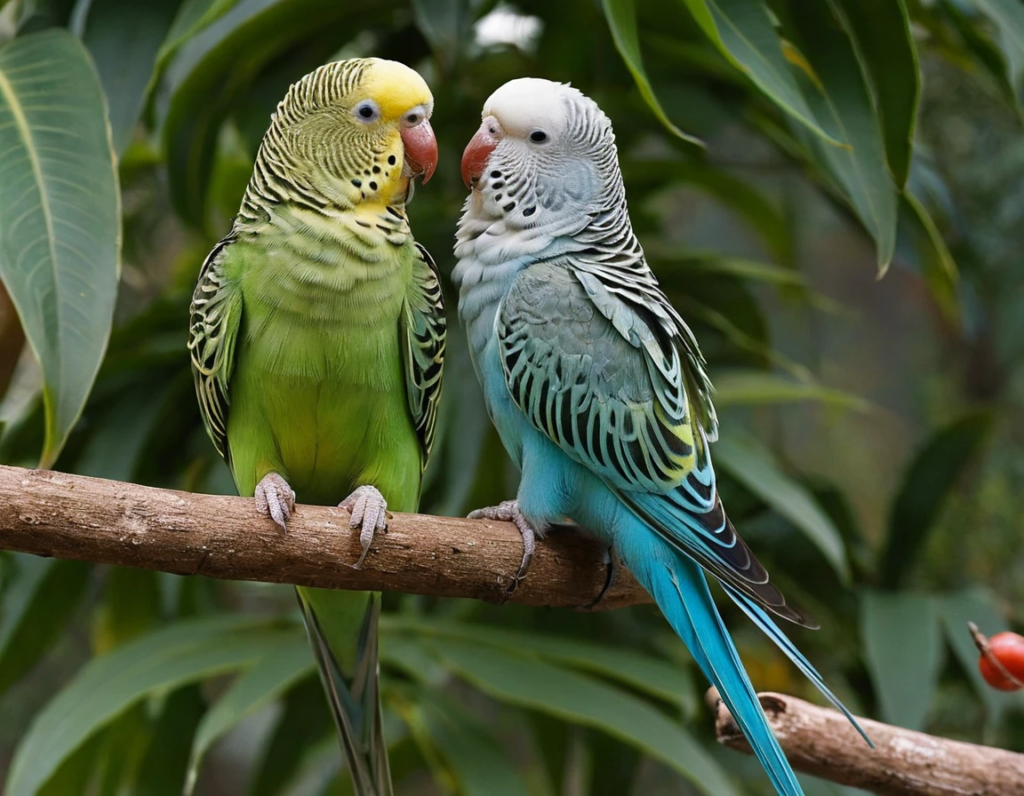
frequently asked questions (FAQs) about parakeet talking:
1. Can all parakeets learn to talk?
Answer: While not all parakeets will learn to talk, many can mimic sounds and words if given the right training and environment. The ability to talk often depends on the bird’s personality, age, and socialization. Some parakeets are more talkative than others, while some may prefer chirping and singing.
2. What is the best age to teach a parakeet to talk?
Answer: The best time to start teaching your parakeet to talk is between 3 to 6 months old. At this age, their brains are still highly receptive to new sounds. However, older parakeets can still learn, but it may take more patience and time.
3. How long does it take for a parakeet to start talking?
Answer: It can take several weeks to months for a parakeet to start mimicking words. Regular practice, repetition, and positive reinforcement (like treats and praise) are key to getting them to say their first words.
4. What words should I start teaching my parakeet?
Answer: Start with simple, frequently used words like “hello,” “good bird,” “bye,” or your parakeet’s name. Keep it short and consistent. Repeating the same words in the same context helps your bird make associations.Answer:
5. How can I encourage my parakeet to talk?
Answer: To encourage your parakeet to talk, spend time talking to it daily. Use positive reinforcement (like treats or affection) when your parakeet mimics a sound or word. Be patient, as it may take time for them to get the hang of it!
6. Why is my parakeet not talking?
Answer: If your parakeet isn’t talking, don’t worry. Some parakeets are just naturally quieter than others. Lack of motivation, too little social interaction, or stress might also affect their desire to mimic sounds. Make sure your bird is comfortable and socialized.
7. Can my parakeet understand the words it says?
Answer: Parakeets don’t understand words the way humans do, but they can learn to associate certain words with actions or rewards. For example, they may associate “hello” with seeing you, or “good bird” with receiving a treat.
8. How can I help my parakeet learn to talk faster?
Answer: Repetition is key! Be consistent in saying the same words and phrases in the same tone. Practice regularly, and ensure that your parakeet is in a calm, comfortable environment where it’s ready to listen and learn.
9. Should I let my parakeet listen to recordings to learn to talk?
Answer: Yes! Parakeets are great imitators, and they can learn new sounds by listening to recordings of speech or other birds. However, it’s important to combine this with personal interaction, as they also learn from your voice and behavior.
10. Can my parakeet learn to talk in a different language?
Answer: Absolutely! If you speak a second language around your parakeet, it can learn words and phrases from that language too. Parakeets are excellent at mimicking sounds, so they’re capable of picking up on different languages as long as they’re exposed to them regularly.
These FAQs should help answer some common questions about parakeet talking while also providing insight into training and understanding your feathered friend!

